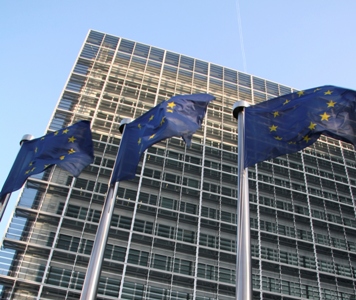A new strategy to improve customs risk management, together with a detailed action plan, has been adopted by the Commission (25 August, 2014).
 The strategy now adopted follows the identification of gaps in the current implementation of customs risk management and responds to the June 2013 EU Council of Ministers' call for measures to address the situation.
The strategy now adopted follows the identification of gaps in the current implementation of customs risk management and responds to the June 2013 EU Council of Ministers' call for measures to address the situation.
Robust customs risk management is essential to protect the safety and security of the EU and its citizens, the interests of legitimate traders and EU financial interests, while enabling the smooth flow of trade. As the volume of trade grows and the international supply chain becomes ever more complex and fast-moving, the framework for customs risk management needs to be adapted accordingly. The new strategy seeks to ensure that customs is more coherent, efficient and cost effective in identifying and supervising supply chain risks, in a way that reflects today's realities. The action plan sets out specific measures to achieve this.
 Algirdas Šemeta, Commissioner responsible for Customs, said: "Customs holds the key to smooth trade and safe trade. With 300 million declarations to process and €3.5 trillion worth of trade in goods to supervise every year, EU customs need to optimise their use of resources, without compromising security or disrupting legal trade. Robust risk management allows customs to identify where, when and how their controls are best deployed, and to respond effectively when threats do arise."
Algirdas Šemeta, Commissioner responsible for Customs, said: "Customs holds the key to smooth trade and safe trade. With 300 million declarations to process and €3.5 trillion worth of trade in goods to supervise every year, EU customs need to optimise their use of resources, without compromising security or disrupting legal trade. Robust risk management allows customs to identify where, when and how their controls are best deployed, and to respond effectively when threats do arise."
The new strategy identifies the key priorities where action is needed to achieve more effective and efficient EU-wide customs risk management. The main priorities in the strategy to improve customs risk management are:
Efficient controls and risk-mitigation
Different types of risk require different responses. For example, the risk of a bomb or infectious disease needs to be dealt with before the shipment is even loaded for transportation in a third country, whereas financial misdemeanours can be addressed through post-clearance audits. To maximise the efficient use of resources, controls have to be performed at the right place and time in the supply chain, and information should be shared more effectively between customs authorities. This will help avoid duplication of controls.
Data quality
To ensure that customs have high-quality, timely information on goods entering and leaving the EU, adjustments need to be made to certain legal, procedural and IT systems. These adjustments should be implemented in a way that does not create undue costs for businesses or public authorities.
Information sharing
To ensure customs authorities can effectively analyse and mitigate risks, mechanisms should be put in place to improve the availability of data and the sharing of risk-relevant information amongst customs authorities throughout the entire control process.
Inter-agency cooperation
Customs should also work closely with other law enforcement authorities. Common risk criteria and improved information sharing would allow the various authorities tackling supply chain risk to support and complement each other's work.
Cooperation with traders
The partnership between customs and reliable traders should be further developed, including through the promotion of the EU Authorised Economic Operator (AEO) programme, in particular through broader recognition by non-customs authorities.
Capacity building
To ensure that all customs authorities implement risk management to a high standard across the EU, divergences between Member States should be identified and addressed.
International customs cooperation
The EU should remain active in helping to set global standards in international fora, and should work to implement and promote these common norms amongst international trading partners.
The EU Strategy and Action Plan for customs risk management can be found on: http://ow.ly/ALNCz
Photo: Algirdas Šemeta, Commissioner responsible for Customs